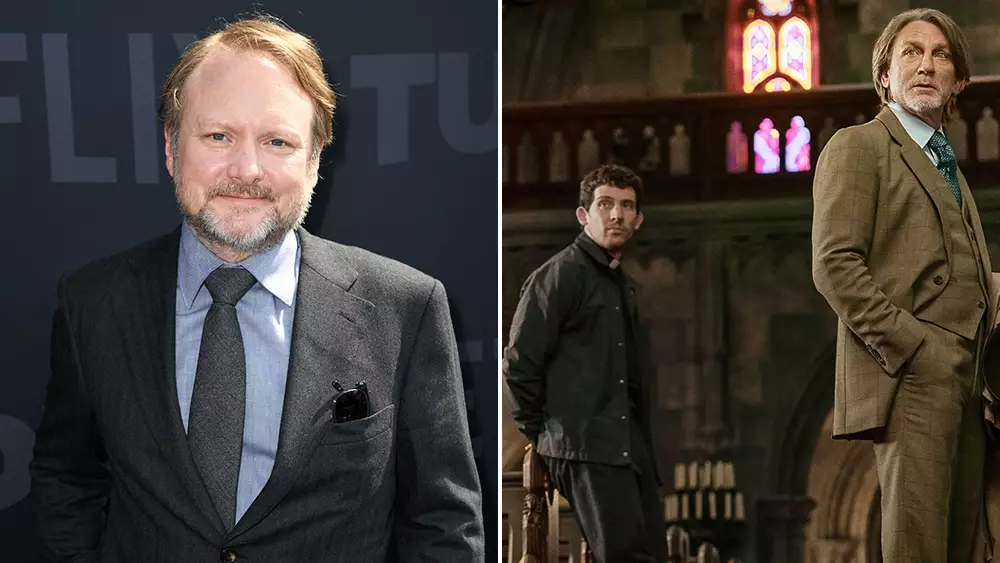In the landscape of modern filmmaking and storytelling, there is an inherent tension between innovation and consistency. Rian Johnson’s decision to pivot toward a more gothic, Edgar Allan Poe-inspired tone for the upcoming “Wake Up Dead Man: A Knives Out Mystery” reflects a commendable desire to break free from predictability. However, this shift also raises critical questions about authenticity and audience expectations. Kill the sameness or risk alienating devoted fans—this is the impossible balancing act creators face.
While Johnson justifies this change as a means of keeping his work fresh and exciting, it exposes a deeper issue with modern franchise filmmaking: the temptation to chase novelty at the expense of narrative coherence. When a series that initially thrived on clever twists and bright, modern humor suddenly plunges into darkness and gothic orchestration, it might undermine the very qualities that attracted audiences in the first place. True artistic innovation involves more than external stylistic shifts; it requires a thoughtful evolution that resonates emotionally and thematically rather than just visually.
This gamble could either be a masterstroke or a misstep that dilutes the franchise’s identity. Artistic growth requires courage, but it also demands a clear understanding of what makes a series compelling. Johnson’s desire to avoid “turning the crank” is noble, yet without a clear vision, such radical tonal shifts risk feeling disjointed and superficial—more of a stunt than a sustained creative evolution.
The Illusion of Reinventing Mystery: Can Genre still surprise in 2024?
Detective stories have long been a staple of literature and film, often rooted in well-established conventions that provide both comfort and challenge for audiences. Edgar Allan Poe, a pioneer of psychological horror and mystery, pushed these boundaries in ways that still influence the genre today. Johnson’s aspiration to return to these roots echoes a longing for depth, atmosphere, and moral complexity often missing from contemporary whodunits.
Yet, in an era overwhelmed by streaming content and endless franchises, “reinventing” a mystery is more about framing than substance. The danger lies in prioritizing aesthetic mood over narrative substance. Gothic tones and grounding in Poe’s tradition do not automatically guarantee a compelling story; they must serve a strong character arc and a logically satisfying plot.
Furthermore, the idea that every project must continually reinvent itself echoes a broader cultural anxiety about stagnation. Audiences crave novelty but also crave familiarity—comfort in storytelling that respects their intelligence while challenging their perceptions. Johnson’s approach suggests a nuanced understanding that genre evolution should be rooted in thematic depth rather than superficial stylistic experiments. If executed well, this could elevate the franchise, offering richer storytelling that appeals to a wider, more discerning audience.
The Future of the Series: A Risk Worth Taking or Franchise Fatigue?
Johnson’s openness to future installments without a concrete plan reveals a healthy skepticism about the nature of franchise filmmaking. It highlights an artist determined to maintain artistic integrity and avoid the “burn the ship” mentality that plagues many Hollywood series. Yet, this also underscores a broader industry question: is there a sustainable way to keep a mystery franchise vital without resorting to tired formulae?
There’s an urgent need to acknowledge that audiences are becoming more critically engaged and less tolerant of formulaic storytelling masquerading as innovation. The risk of pushing boundaries is that it can backfire if the new direction feels disconnected from the core identity of the series. However, it also offers an unprecedented opportunity to challenge Hollywood’s conventions and elevate the genre into new territory.
Johnson’s declaration that he will continue as long as he can “swing” creatively reflects a rare commitment to artistic integrity over commercial expediency. As fans and critics alike debate whether gothic atmospheres and Poe-esque darkness will serve the mystery genre well, it’s clear that the future depends on nuanced execution. The challenge lies not only in embracing stylistic changes but in ensuring they are authentic and meaningful—an endeavor that demands both boldness and restraint.
This upcoming film could serve as a litmus test for whether the series can truly evolve without losing sight of what made it compelling. If rooted in character, moral ambiguity, and thematic richness, a Gothic turn can reinvigorate the genre and broaden its emotional palette. Conversely, superficial stylistic experimentation risks reducing the series to superficial mood swings—an easy gamble that often leads to franchise fatigue.
As the mystery genre grapples with its place in contemporary storytelling, Johnson’s daring approach could either herald a more sophisticated era or reinforce the pitfalls of trying too hard to surprise. The road ahead is fraught with potential but paved with the remnants of outdated formulas and unfulfilled expectations. The true test lies in whether the Gothic revival will deepen the narrative or merely dress up familiar tropes in darker clothes.


Leave a Reply